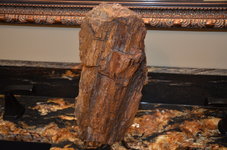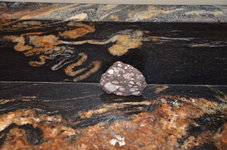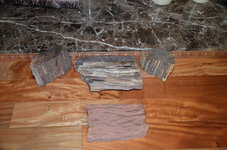You are using an out of date browser. It may not display this or other websites correctly.
You should upgrade or use an alternative browser.
You should upgrade or use an alternative browser.
Put your favorite stone you have on this thread (doesn’t have to be suiseki)
- Thread starter BonsaiSniper
- Start date
shinmai
Chumono
You three should be out of jail by now... How about an update!!!Dragged this with 3 friends 700 meters across the forest.
View attachment 327917View attachment 327918View attachment 327919View attachment 327920View attachment 327921View attachment 327922View attachment 327923View attachment 327924
JackHammer
Chumono
rockm
Spuds Moyogi
Is "dragon stone" a thing? I picked one up from my local garden center and put a ficus microcarpa cutting on top of it with a mostly pumice mix. It seems pretty delicate so I don't think it would endure a lot of freezing.
Just an example pic:
View attachment 505776
"Dragon stone" is typically a prepared terrarium or aquarium stone mined and shaped in China. It is carved into shapes along with grooves, etc. It's not really suiseki, which are natural stone with no carving (although that can be a fluid thing, as some get surreptitiously carved or modified).
shinmai
Chumono
Just about any stone can be the basis of a planting, but as our friend rightly says, suiseki are generally appreciated as found.
As to ficus m., forget freezing—you’d better be bringing it inside when temps go below 50 degrees F. It’ll be dead long before you get to 32.
As to ficus m., forget freezing—you’d better be bringing it inside when temps go below 50 degrees F. It’ll be dead long before you get to 32.
shinmai
Chumono
I’ve been seeing a lot more stones for sale on eBay, Etsy, etc. with the bottom sliced off to make placement easier. Like oiling or waxing a stone to simulate the patina of decades of handling, it seems to be becoming more widespread and acceptable. Not sure whether that’s good or bad."Dragon stone" is typically a prepared terrarium or aquarium stone mined and shaped in China. It is carved into shapes along with grooves, etc. It's not really suiseki, which are natural stone with no carving (although that can be a fluid thing, as some get surreptitiously carved or modified).
rockm
Spuds Moyogi
I've noticed that too, as well as a ton of carved crap trying to pass for suiseki as well.I’ve been seeing a lot more stones for sale on eBay, Etsy, etc. with the bottom sliced off to make placement easier. Like oiling or waxing a stone to simulate the patina of decades of handling, it seems to be becoming more widespread and acceptable. Not sure whether that’s good or bad.
JackHammer
Chumono
That s neat. I really didn't know. I will have to take a closer look at them next time I am at my lgc."Dragon stone" is typically a prepared terrarium or aquarium stone mined and shaped in China. It is carved into shapes along with grooves, etc. It's not really suiseki, which are natural stone with no carving (although that can be a fluid thing, as some get surreptitiously carved or modified).
JackHammer
Chumono
Oh yes, yes. The ficus come inside. It won't be too much longer now.Just about any stone can be the basis of a planting, but as our friend rightly says, suiseki are generally appreciated as found.
As to ficus m., forget freezing—you’d better be bringing it inside when temps go below 50 degrees F. It’ll be dead long before you get to 32.
JackHammer
Chumono
I looked it up and really didn't find any information on how they were made. I saw at least one advertiser (as well as home depot) claiming that they were "natural", whatever that means. They did mention about clay being removed from the stones after many years and that this can be sped up mechanically/synthetically but didn't say how."Dragon stone" is typically a prepared terrarium or aquarium stone mined and shaped in China. It is carved into shapes along with grooves, etc. It's not really suiseki, which are natural stone with no carving (although that can be a fluid thing, as some get surreptitiously carved or modified).
If there is a way to carve stone to look like that, I think it would be really cool to see the process.
rockm
Spuds Moyogi
Stones used in ornamental aquariums, etc. like Dragon stone and Seiryu stone is processed in many ways, including acid washes that remove softer deposits in the stone matrix. Some are intricately carved. Some is just washed, etc. You can carve Dragon stone (ohko stone) as it's pretty soft sedimentary rock. If you have a chisel and some time to learn how to use it. Power tools help as well, as in angle grinders, stone saws and the like. Good luck not losing a finger or an eye...I looked it up and really didn't find any information on how they were made. I saw at least one advertiser (as well as home depot) claiming that they were "natural", whatever that means. They did mention about clay being removed from the stones after many years and that this can be sped up mechanically/synthetically but didn't say how.
If there is a way to carve stone to look like that, I think it would be really cool to see the process.
By Natural, they mean it's not poured concrete, etc. It's real stone.
TCEvan
Yamadori
Japonicus
Imperial Masterpiece

Just updated our vanity. Probably from Brasil. Taurus same as Magma Gold, leathered.
Then a couple of souvenirs we collected from the West.

This is a 2 fist sized piece of granite from the Crazy Horse memorial in the Black Hills of South Dakota.



Petrified wood weighs maybe 8-10#

No idea where this one came from except I saved it from when I closed up house and turned the keys over
to the new owner at my folks house.
also.. “Grilled Cheese Rock”

How about Smores rock? Chocolate rock with try colour marshmallow minis.
Mostly pink and gray, but there's a little yellow in one or 2 of them.

Don't think I'd ever use this red ?sand stone? from Utah in a planting but it's pretty cool.
My wife found it alongside a road somewhere in Utah. It's deeply grooved, maybe river silt and heat.
About 3cm thick.
I have always thought about using the other pieces of petrified wood behind it in a planting.
Some of the petrified wood is more porous than the majority densley formed stone.
Would that be an issue for the stone wicking moisture?
Sorry the coal is at my moms house
Last edited:
Very nice local stone...Found in northern Michigan this summerView attachment 505815
PaulH
Omono
Flat cutting the bottom of a suiseki is generally considered acceptable, although an uncut stone usually has more value. Tom Elias, suiseki expert and author of several books on viewing stones has told me that most stones sold in Japan and China have been altered in some way if not outright manufactured. Also a light coat of oil is a common way to bring out the beauty of a suiseki and perfectly legit. That said, Stones with true age and provenance are treasures. Doesn't mean you can't enjoy a gorgeous stone that has been manipulated.I’ve been seeing a lot more stones for sale on eBay, Etsy, etc. with the bottom sliced off to make placement easier. Like oiling or waxing a stone to simulate the patina of decades of handling, it seems to be becoming more widespread and acceptable. Not sure whether that’s good or bad.
Weta
Shohin
Weta
Shohin
Joe Dupre'
Masterpiece
Joe Dupre'
Masterpiece
Snowman04  , I'm really serious. We have NO natural rocks in our part of the country. I found this one in the back yard, obviously brought here from somewhere else.
, I'm really serious. We have NO natural rocks in our part of the country. I found this one in the back yard, obviously brought here from somewhere else.
Similar threads
- Poll
- Replies
- 8
- Views
- 805
- Replies
- 5
- Views
- 644
- Replies
- 14
- Views
- 1K








